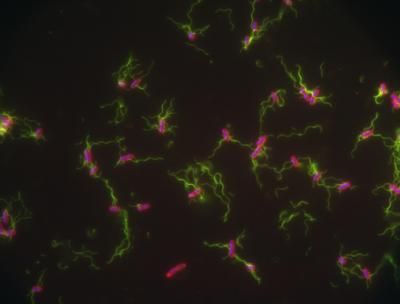Photocure announces results from phase II study in acne with Visonac
Advertisement
Photocure announced results from its phase II study in acne with Visonac(TM) in combination with its new full face acne lamp. The efficacy results received in the last phase II study in acne with a simplified VisonacTM procedure were not as good as phase II results previously obtained with VisonacTM .
The study was initiated following discussions with the US Food & Drug Administration (FDA) in 2009, during which the agency requested additional clinical data on paediatric patients (aged nine and above). The trial was conducted with a simplified Visonac(TM) treatment procedure compared to previous studies, with Photocure's new full-face acne lamp, the CL 512 photodynamic therapy (PDT) lamp.
The placebo controlled study included 107 patients at 11 clinical centres in the US and Canada. All patients were treated four times with two week intervals. The treatment procedure consisted of Visonac(TM) cream applied on acne affected areas and incubated for 1.5 hours without covering the treatment site with a plastic film to enhance skin absorbtion of the active ingredient (known as occlusion). This was followed by illumination of nine minutes 15 seconds by the new full face lamp.
The primary endpoints for the trial were a reduction in lesion count and treatment success six weeks after the last treatment. The results showed a median reduction of 39.8% for the inflammatory lesions and 36.3% for the non-inflammatory lesions after Visonac(TM). While the reductions observed in the Visonac(TM) treated group were higher than in the placebo group, it did not reach a significant level. In line with previously reported phase II studies, this study documented the favourable side-effect profile of the Visonac(TM) procedure in patients down to nine years with low frequency of pain and erythema.
These reductions in lesion counts were lower than previously reported in a previous phase II Visonac(TM) study which included occlusion, where the median reduction for inflammatory lesions was 57.0% and for the non-inflammatory lesions was 47.0%, and in which there was a significant difference compared to placebo treated patients.
Photocure performed a subgroup analysis in this recent phase II study of patients with moderate to severe acne that had previously received oral antibiotics. This is the population that Photocure has identified as the most appropriate target population, and one where there is an increasing medical need for new treatment options. Of this subgroup, approximately 40% of the patients had been previously treated with oral antibiotics with low or no effect on their acne. The results in this population demonstrated a promising benefit of Visonac(TM) treatment compared to more naïve patients. For these patients, where the only treatment option is repeated oral antibiotics treatment or oral isotretinoin, there is a clear need for a new treatment such as Visonac(TM).
Photocure are considering the options for the further development of Visonac(TM), and plan to present these plans in the third quarter 2010. It believes that promising data from previous studies, including the results in a major subpopulation, demonstrates the potential of Visonac(TM) as a new treatment for patients with moderate to severe acne with a favourable side-effect profile.



























































